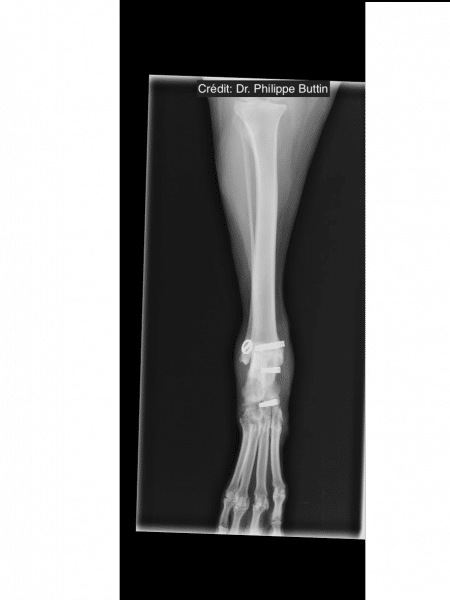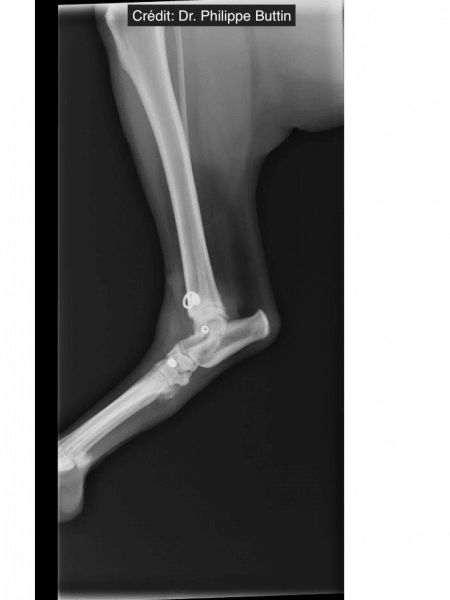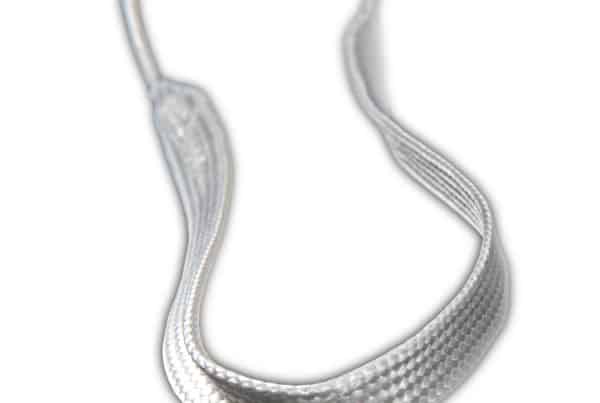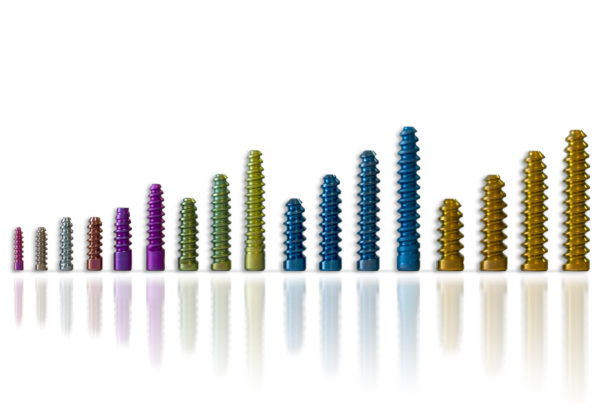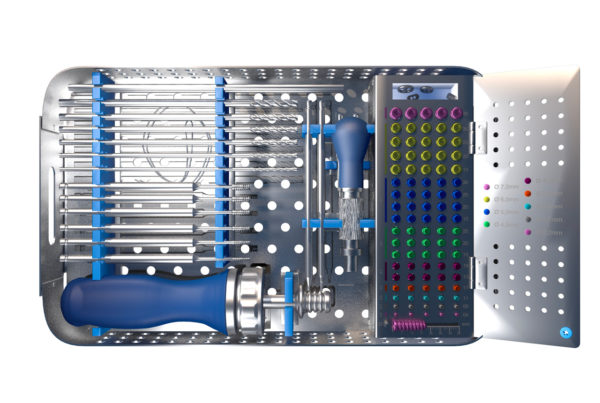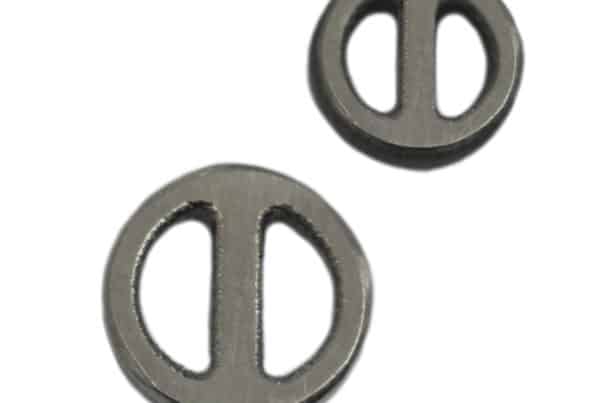Reconstruction of tarsal medial collateral ligament
Partial or complete rupture of the tarsal medial collateral ligament leads to more or less severe laxity or even dislocation of the tarsus.
Surgical treatment is often necessary to reconstruct the damaged structures and to stabilize the joint permanently. The use of a NOVALIG® synthetic ligament with its interference screw and cortical button fixation system offers a good option for this condition.
Developed in partnership with :

École Vétérinaire de Lyon

Dr Philippe Buttin

Dr Vincenzo Santoro

Pr Filippo Martini
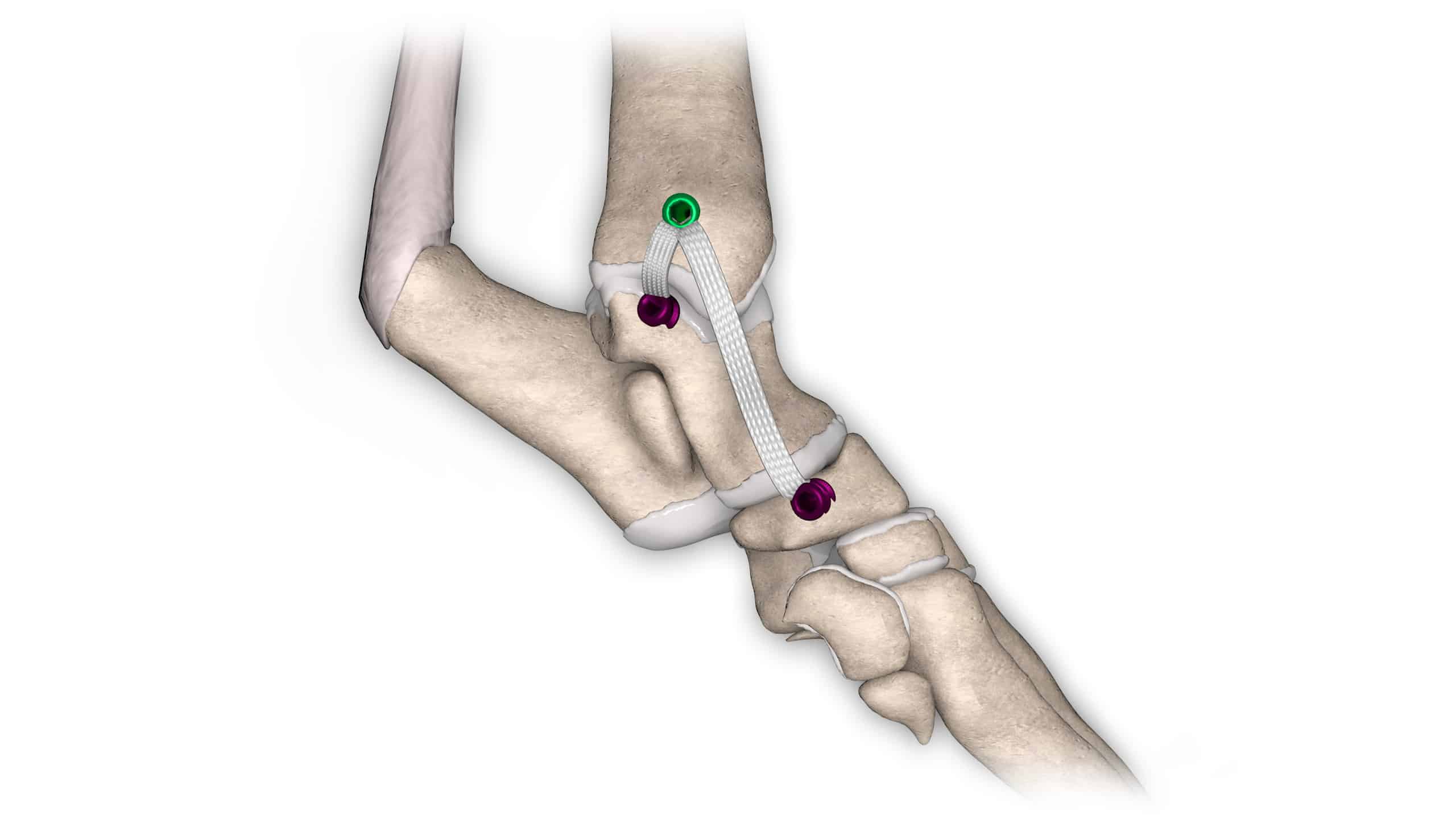
3D Video
Radiograph
F.A.Q.
NOVALIG® is described as a synthetic ligament - but how is it different from a suture?
NOVALIG® is much stronger and wider than a suture. Its theoretical strength can reach 8000N.
Its special braiding makes it much less abrasive and sharp than FiberTech-type UHMWPE sutures, thus limiting bone shearing effects. It also has a favorable interface for cell colonization.
The NOVALIG® ligament is relatively long, which makes multi-ligament repair possible with a single ligament and several bone anchors.
Why use interference screws for fixation?
Interference screws provide immediate, atraumatic fixation for the implant and are fully fixed in the bone. They reduce the risks of irritation and early laceration thanks to a large knot.
The mechanical resistance of this type of fixation has made it a gold standard in many human medicine applications.

